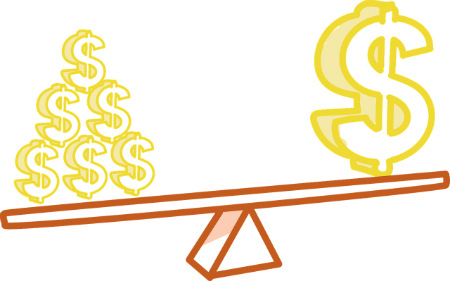Evaluating payday loan fees
 Most people have heard or used payday loans. Have you ever stopped and really considered what the interest rates are that can be associated with a payday loan? Most people never really stop to consider it, instead they merely think about the fees that can be charged which tends to be roughly $15 for each $100 that you borrow. On its own, you are looking at an interest rate of approximately 391%, which seems extremely excessive, but how does this really compare to paying a bill late if there is a late fee involved? The biggest question that people have is how much money are they really saving by obtaining a payday advance to pay a bill. The ultimate answer will vary of course depending upon your specific bills and the fees that you are charged but we are going to take a moment to just look at some basic scenarios for a moment. This can help you to gather a clear indication of just how much a payday loan really costs, and what type of money you are either wasting or saving.
Most people have heard or used payday loans. Have you ever stopped and really considered what the interest rates are that can be associated with a payday loan? Most people never really stop to consider it, instead they merely think about the fees that can be charged which tends to be roughly $15 for each $100 that you borrow. On its own, you are looking at an interest rate of approximately 391%, which seems extremely excessive, but how does this really compare to paying a bill late if there is a late fee involved? The biggest question that people have is how much money are they really saving by obtaining a payday advance to pay a bill. The ultimate answer will vary of course depending upon your specific bills and the fees that you are charged but we are going to take a moment to just look at some basic scenarios for a moment. This can help you to gather a clear indication of just how much a payday loan really costs, and what type of money you are either wasting or saving.
One of the biggest reasons that people obtain a payday advance is so that they can cover a potential bounced check fee at their bank. But if you stop and consider how much the bounced check charges can add up to, you are looking at an extremely heavy interest rate as well. For example, if you consider that your bank will charge you a $30 fee, in addition to a $20 fee from the merchant this is a combined cost of $50 just for a single check. Assume that the check was for a mere $100. This adds up to a total of $150, however if you obtained a payday loan for $100, you would be repaying only $115. The interest rates for the NSF fees are more than 1,251%! Talk about a huge savings by obtaining a payday loan, but if you just initially look at the $15 charge that is standard for the $100 payday loan, you can see how the number would appear huge.
Another example is a credit card bill. If you owe $100 on your credit card and your late payment fee is $30 for paying it late you are looking at owing $130 for your credit card bill for a single month. This is in comparison to the $115 that you would owe for the cash advance. However, compared to the 391% interest rate for the cash advance you are looking at more than 678% interest to the credit card company. Once again, this is a huge difference that you might not even realize initially, but after just a single late payment fee to the credit card company, you can see how this can really throw your budget off. Let us assume for a moment that the credit card company adding the $30 late payment fee threw your account over the limit, you are then looking at another $30 over the limit fee, plus possibly looking at a higher interest rate because you have gotten behind.
For a last example, let us look at a utility bill. For example, once again the bill is $100, and you are not able to pay the bill. Let us assume that your power is turned off. In my area you would be required to pay an additional $200 deposit, plus a $75 reconnect fee! All of this is tacked onto your original $100 power bill, which now has the huge sum of $375, of which only $100 is actually credited to your account. As you can see, the fees that you can incur in lieu of using a payday loan are astronomical which makes the high fees of a payday loan look quite mild.